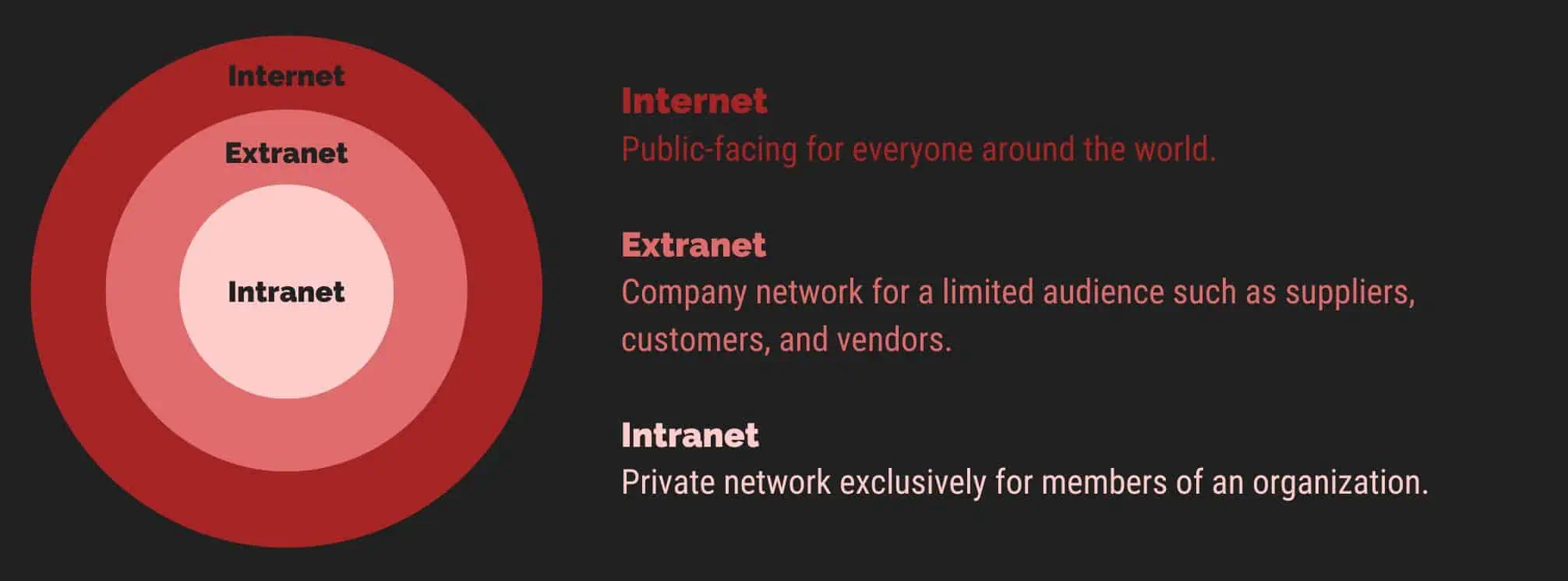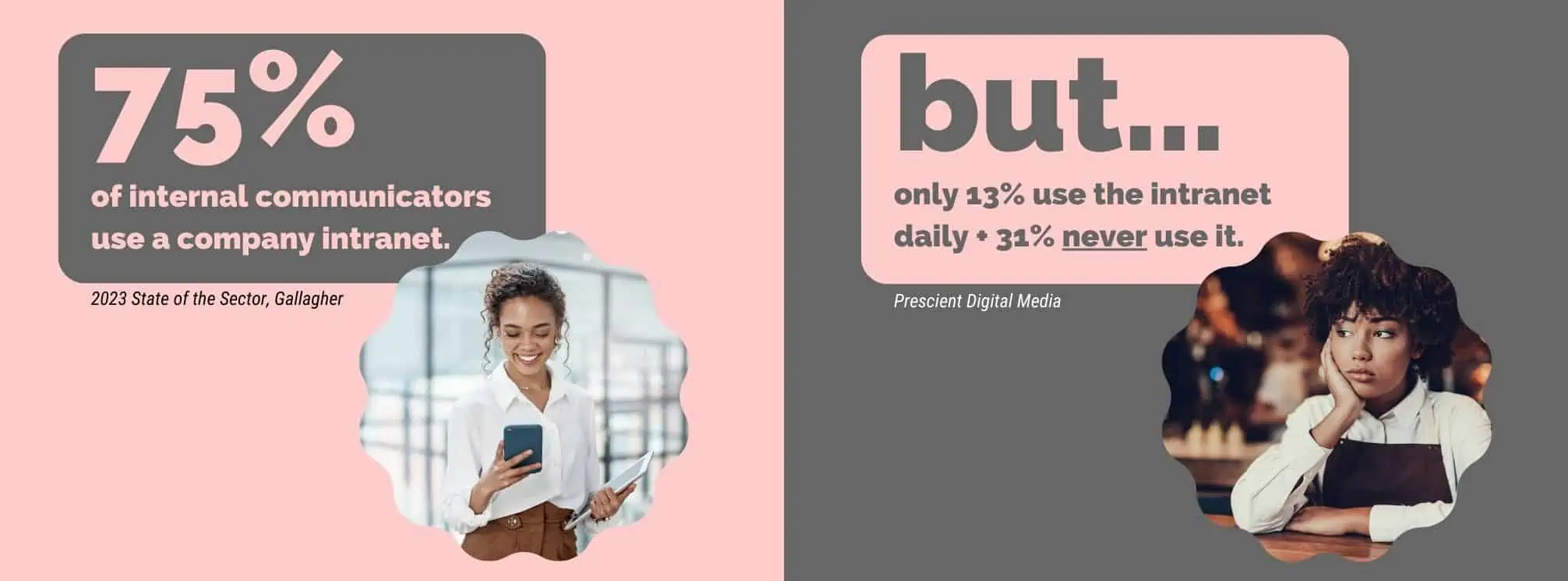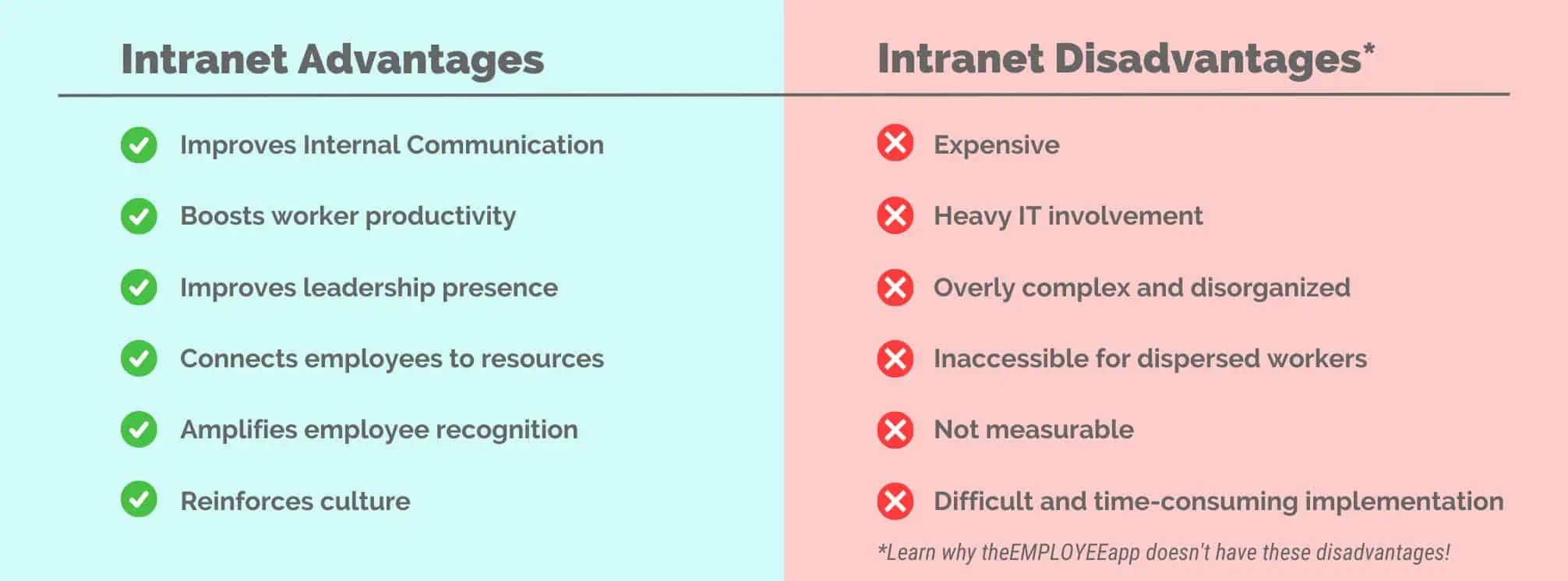What is a Company Intranet & Do You Need One?
In today’s digital age, businesses are flooded with various tools to manage internal communications, but is the company intranet still relevant? With so many modern alternatives like chat apps and project management tools, you might be wondering if intranets are a thing of the past.
The truth is, a well-designed company intranet is far from obsolete. It remains a vital tool for centralizing information, improving employee engagement, and streamlining communication across teams. In this blog, we’ll explore why businesses continue to rely on intranets and how a modern approach can transform your internal communication strategy.
What is a Modern Company Intranet?
A company intranet is a secure and private communication network that is used by businesses for internal comms, document sharing, and providing access to tools and resources for employees. These tools may also be called internal employee websites, employee portals, or the social intranet. As they have evolved, what companies call this internal “internet” has changed.
That said, not all corporate intranets are created equal. Because intranets have been used by companies for some time, there are many solutions that are outdated and don’t live up to the needs of the modern workforce.
So, a modern internet is a solution that is geared towards improving the employee experience by creating a robust hub of information, tools, and messaging that engages employees and helps activate them to achieve key business results.

What’s the Difference Between Intranets, Internets, and Extranets?
Because intranets have so many names, there can be some confusion about the differences between these tools. Here are a few helpful definitions and distinctions between intranets, internets, and extranets:
- Internet: The internet refers to the public resource we all know and love for finding information and resources from a variety of sources.
- Intranet: The intranet is like the internet, but it’s closed off to just the members of a company with the source of information also being curated exclusively from the company.
- Extranet: An extranet is another type of network used by companies. This one is still restricted so it’s not publicly facing, but a company does give extranet access to third parties like vendors or clients.
Do Companies Still Use Intranets?
We’ve already alluded to the fact that many intranets are dinosaurs compared to the modern technology we’ve become accustomed to. It begs the question: are intranets still relevant?
The short answer is: yes. Companies still need a centralized tool that can become a resource hub for important employee-facing information.
The long answer is: it depends on the intranet provider you have and how you’re using it. If your intranet relies on old, outdated technology that provides employees with a bad digital employee experience, then it’s unlikely the tool is very useful to your teams. And if it’s not useful or usable, is it really being used by your employees? Probably not.
The 2023 State of the Sector found that 75% of internal comms professionals are using a company intranet as one of their comms channels.
But a Prescient Digital Media study found that only 13% of employees reported using an intranet daily with 31% never using it.
Why are those data points so low? Although that Prescient Digital Media study is not recent, it does indicate that the outdated intranets most companies rely on are not what employees want.
Perhaps, this explains why communicators only find their intranets to be 58% effective (State of the Sector), which is far lower than channels like apps, meetings, calls, and email.
This is why you’ve started to see a reckoning in the employee communications space. There are now modern, mobile-first intranets as well as other channels to supplement the comms tech stack.
Why Do You Need an Intranet?
So, if usage of intranets are so low, why do you still need one? Our answer to this question is twofold:
- We need company intranets because they are ingrained in the way we work. Intranets have been used by companies for decades. As such, they are a part of our work routines and expectations.
- Just because some intranets fail doesn’t mean the modern company intranet is a bad idea. Hear us out: an intranet that’s a source of truth and a convenient hub of information is a great idea. Where intranets fail is having the wrong content and strategy locked down on a tool that is hard for the majority of employees (deskless workers) to access.
We still need comms solutions that are positive for EX, that build trust and transparency, and make it easier for our employees to do their jobs. A great employee intranet can be part of that strategy.
Let’s talk about what it takes to create an intranet your employees actually want to use.
[optin-monster slug=”wnf8kueuxnqe9q0op0ru” followrules=”true”]
Who Should Own a Company Intranet?
Your company intranet should be owned, managed, and updated by the internal comms team but also supported and maintained by the IT team. But we do think it’s very important that those roles remain separate and that the internal comms team be given the strategic ownership of the intranet.
The reason it’s a good idea to let internal comms own the intranet is because:
- The intranet is a strategic communication tool. Internal comms owns all other channels and should be the project owner of the intranet as well.
- This also helps to ensure that there aren’t too many hands in the pot at once. An intranet can quickly become overwhelming if there isn’t a clear content governance structure in place. Having one clear owner will help.
That said, internal comms should work cross-functionally across the business to understand each division’s goals and comms needs. This will ensure they create a content strategy that is relevant to the needs of the company as well as the employees.
What Should Be On a Company Intranet?
Once internal comms is given the control over the intranet content strategy, you can start developing great content that your employees will actually read.
A few of the essentials that you should include on your intranet are:
- Company Directory. Make it easy for employees to get in touch with the right people or get help faster with a company directory. We think it’s especially valuable to highlight IT and HR support contacts.
- Company News. Employees want to know how your company is giving back to the community, achieving its goals, and making a difference. Make these stories a feature of your intranet!
- Employee Recognition (and team recognition). Show your teams that you care about them and appreciate their contributions with regular employee appreciation posts.
- Micro-learning Content. Training and development is an important part of the employee experience and retaining talent. Share up-skilling content, manager tips, and other short-form training on your intranet.
- Operational Content. Known outage or change coming soon? Use your intranet to help reinforce the message and remind employees what’s happening.
- Resource Quick Links. An intranet is a great way to connect the systems your employees will need. Link to your HRIS, surveys, payroll, time clock, and other important resources from your intranet.
What Does a Great Intranet Look Like?
A great intranet isn’t just about high-quality content. It should be:
- Easy to use
- A familiar user interface (UI)
- Accessible
- Searchable
Designing your intranet can be difficult. While solutions like Sharepoint allow for customization, this takes tremendous effort and resources. That’s why many new intranet providers, like theEMPLOYEEapp, have been developed to have a great user experience with customizable widgets. This ensures that the end result of your intranet is usable, fast, and easy to navigate.
What Are Three Uses of an Intranet?
At the end of the day, an intranet is for your employees and should be all about improving their experience at work. Whether that means improving their productivity, access to information, or helping them feel like they belong, it all should come back to helping your people.
Given that, we think the three primary uses of an intranet are:
- Sharing employee communication. First and foremost, your intranet should be a communication tool. Don’t let it go weeks without getting fresh content. If you don’t maintain it and update it regularly, your employees won’t build the habit of checking the intranet for important updates and information about the company.
- Creating a content hub. We think the best intranets consider the holistic digital employee experience. If it can become a hub that integrates with other systems and also stores all the information an employee will need (and be searchable), you will save your employees a ton of time.
- Document and process management. Having a single source of truth for the latest policies, procedures, and ways of working can be very helpful for getting everyone on the same page. It not only will help your employees know what’s expected of them but create a record for the company. [Just don’t forget to update it and archive what no longer matters!]
Why Do Some Intranets Fail?
There are a few major reasons why many intranets fail. That failure might look different depending on your company and what your goals were, but it all boils down to whether or not your employees use it and act on the information it provides.
Unfortunately, a lot of intranets aren’t as successful as a company wants. Here are the main reasons why:
- There is no clear content governance. If you have too many cooks in the kitchen, you can end up with a disorganized mess or a lack of ownership where no one takes full responsibility and enacts a clear vision. Either way, it leads to a poor experience for your end-user.
- You don’t have clear or achievable goals. Do you have goals for your intranet or are they unrealistic? In either case, you need to have SMART goals that give you strategic direction. How will you know if your intranet has failed or not if you aren’t measuring anything?
- The content on your intranet isn’t good. We’re sorry to say, but it’s possible that your content isn’t good enough. It only takes a few visits to your intranet for your employees to judge the content and decide if it’s worth their time. So, you want to have consistently good content.
- It’s not user-friendly. This boils down to a few factors, be it search, accessibility, or a poor UI that makes it difficult for users to find what they’re looking for.
What Are the Advantages & Disadvantages of a Company Intranet?
Still on the fence about if you need a company intranet? Let’s break down the pros and cons.
What Are the Advantages of an Intranet?
Luckily, the advantages of having a good intranet for your company outweigh the disadvantages. A well-managed intranet:
- Improves the internal comms at your company. While it might not be the best peer-to-peer chat solution or great for upward communication, an intranet is a great way to improve top-down communication and elevate voices through storytelling.
- Gets executive leaders in front of employees. Leadership communication is more important than ever. An intranet is one channel that will help you get them and their message front and center.
- Connects employees to important resources. Whether it’s training, the employee handbook, or your HRIS integration, an intranet gets employees the information they need when they need it.
- Supports your employee recognition strategy. The intranet is a great place to recognize employees and teams for their hard work.
- Reinforces company culture. Externally, people can learn what kind of company you are from your website and social media presence. The same is true internally with your comms channels. Make sure those news feeds represent who you are and want to be as a business.
What Are the Disadvantages of an Intranet?
Luckily, the big disadvantages of an intranet aren’t universal. These all can really depend on your company intranet provider. But a few trends are that intranets are:
- Expensive
- Hard to implement and require heavy IT involvement
- Time-consuming to implement and maintain
- Not organized and complex
- Difficult to access from remote locations
- Not measurable
[optin-monster slug=”y9ym2dpagrtmaqmf98zv” followrules=”true”]
Why Use theEMPLOYEEapp’s Company Intranet?
Our team has developed our mobile intranet solution specifically to avoid the common pitfalls of intranets. We believe that the experience should be seamless and modern for your end-users, making it easy to say goodbye to the outdated intranets you might be used to.
- Not only is our intranet accessible from anywhere, it is also mobile-first with an employee app and desktop interface.
- Communications professionals can create strategies that reach maximum effectiveness by being able to target messages on the intranet to employee groups.
- Customizable widgets allow you to create the best experience for your employees while also benefiting from our familiar user interface.
- Profile photos and a company directory help connect employees to the right resources and people within the company.
- Multiple levels of administrative privileges can be granted to employees or groups to empower manager communication and upward communication, rather than solely top-down messaging.
[optin-monster slug=”ucyxtz2fxemh6aryl4gg” followrules=”true”]





